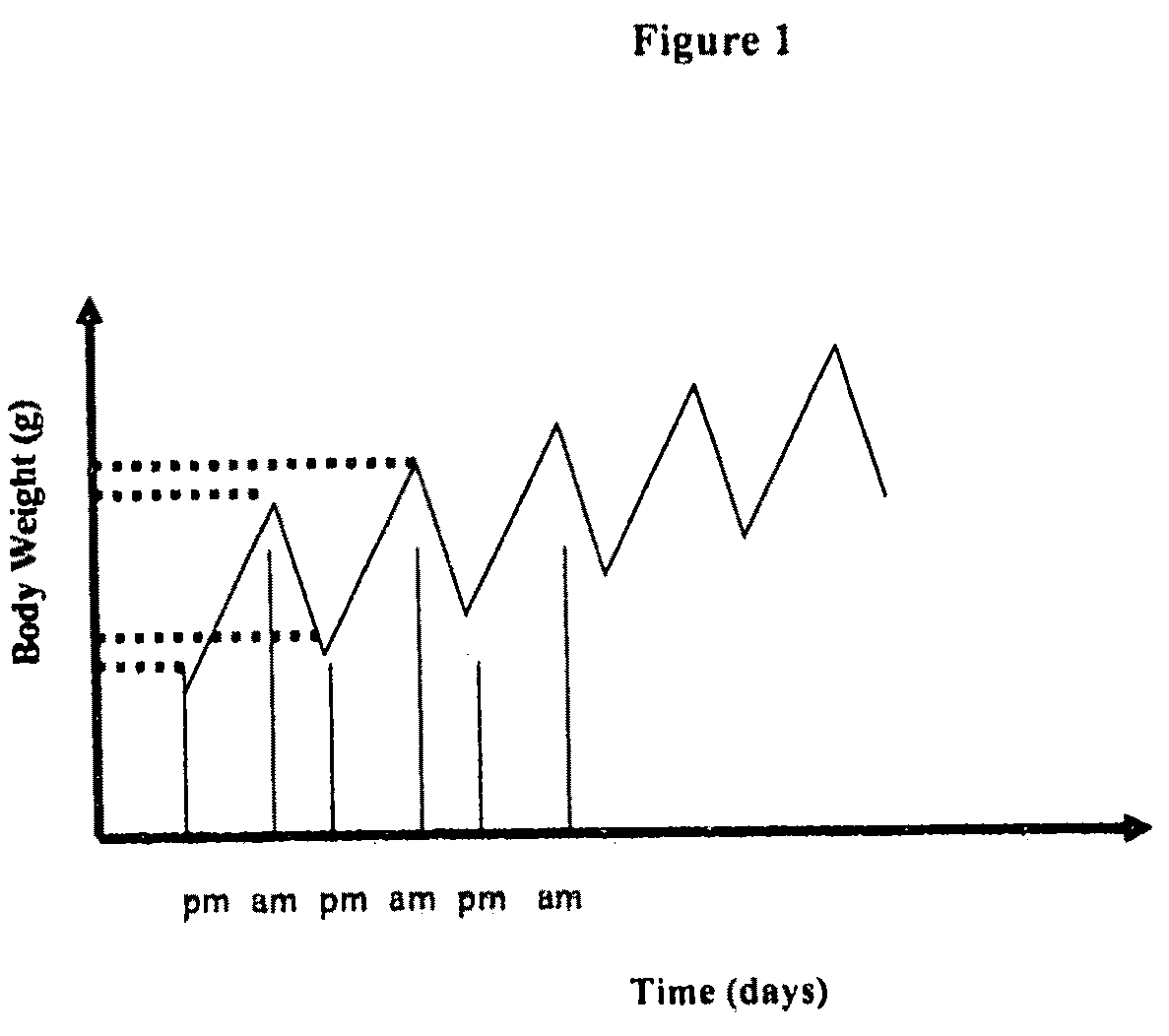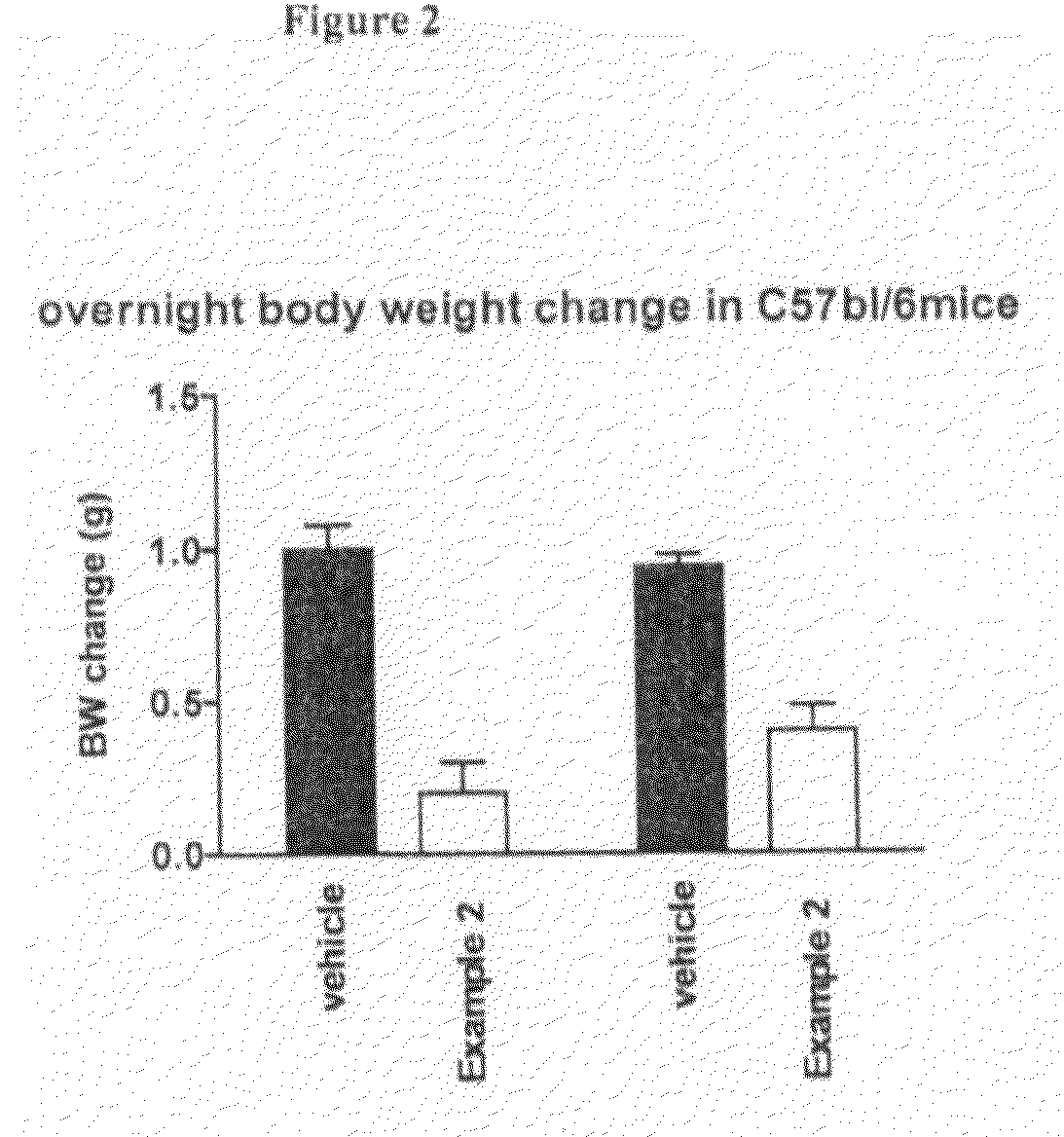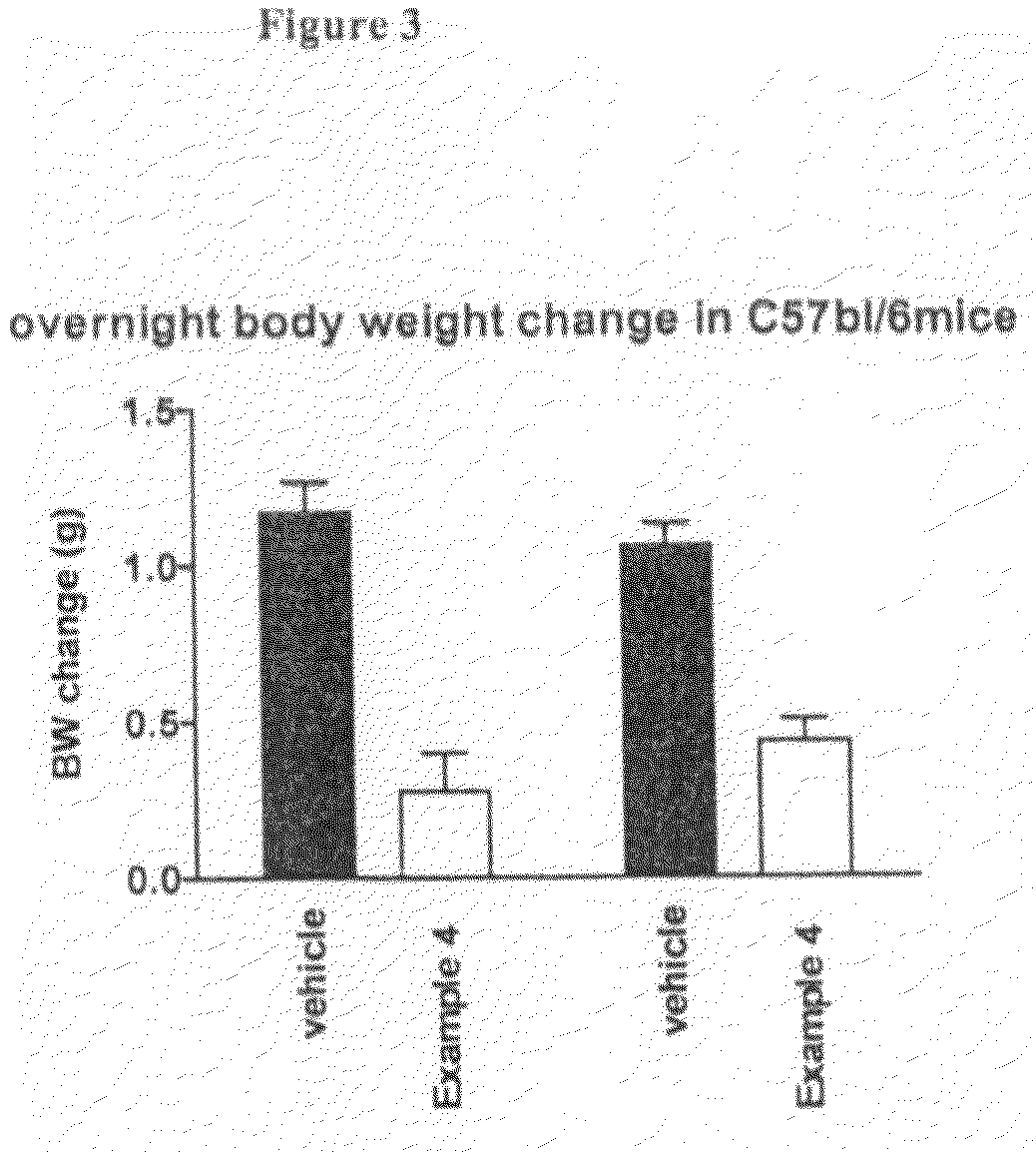New compounds III
a new type of compound and compound technology, applied in the field of new compounds, can solve the problem of deficiency in the obese state of leptin transport into the brain, and achieve the effect of reducing body weight and food intak
- Summary
- Abstract
- Description
- Claims
- Application Information
AI Technical Summary
Benefits of technology
Problems solved by technology
Method used
Image
Examples
example 1
(1-Methylpiperidin-4-yl)methyl 3,4-dihydroisoquinoline-2(1H)-carboxylate
[0145]
[0146](1-Methylpiperidin-4-yl)methyl 4-nitrophenyl carbonate (Intermediate 1; 4.10 g, 13.9 mmol) was dissolved in DMF (60 mL). DIPEA (3.64 mL, 20.9 mmol) and 1,2,3,4-tetrahydroisoquinoline (1.74 g, 3.93 mmol) were added. The reaction mixture was stirred at room temperature for 18 h and then concentrated in vacuo. The residue was dissolved in EtOAc (300 mL) and then washed sequentially with sat aq NaHCO3 solution (8×200 mL) and brine (50 mL). The solution was dried (MgSO4) and concentrated in vacuo. The residue was purified by reverse phase chromatography (gradient eluting with MeOH in water, with 1% formic acid in each solvent, 0-30%). The resulting residue was dissolved in DCM (70 ml) and stirred with solid K2CO3 for 20 minutes, filtered and concentrated in vacuo to give (1-methylpiperidin-4-yl)methyl 3,4-dihydroisoquinoline-2(1H)-carboxylate (0.374 g, 9.3%) as a pale yellow oil.
[0147]Analytical HPLC: pur...
example 2
2-(4-Methylpiperazin-1-yl)ethyl 3,4-dihydroquinoline-1(2H)-carboxylate
[0148]
[0149]2-(4-Methylpiperazin-1-yl)ethyl 4-nitrophenyl carbonate (Intermediate 2; 2.76 g, 8.91 mmol) was dissolved in DMF (30 mL). DIPEA (1.55 mL, 9.32 mmol) and 1,2,3,4-tetrahydroquinoline (1.17 mL, 9.32 mmol) were added and the reaction mixture was stirred at room temperature for 48 hours, and the reaction mixture was then concentrated in vacuo. The residue was purified by normal phase column chromatography (eluting with DCM, followed by a 90:10 mixture of DCM:MeOH, followed by a 80:20 mixture of DCM:MeOH) followed by reverse phase chromatography (gradient eluting with MeOH in water, with 1% formic acid in each solvent, 0-20%). The resulting residue was dissolved in DCM (50 mL) and stirred with solid K2CO3 for 20 minutes, filtered and concentrated in vacuo to give 2-(4-methylpiperazin-1-yl)ethyl 3,4-dihydroquinoline-1(2H)-carboxylate (236 mg, 9.0%) as a yellow oil.
[0150]Analytical HPLC: purity 99.8% (System A...
example 3
2-(4-Methylpiperazin-1-yl)ethyl 3,4-dihydroisoquinoline-2(1H)-carboxylate
[0151]
[0152]2-(4-Methylpiperazin-1-yl)ethyl 4-nitrophenyl carbonate (Intermediate 2; 2.00 g, 6.47 mmol) was dissolved in DMF (30 mL). DIPEA (1.69 mL, 9.71 mmol) and 1,2,3,4-tetrahydroisoquinoline (0.81 mL, 6.47 mmol) were added and the reaction mixture was stirred at room temperature for 18 hours, and the reaction mixture was then concentrated in vacuo. The resulting residue was dissolved in ethyl acetate (300 mL) and washed with a 1M aq Na2CO3 solution (5×200 mL) and brine (50 mL). The solution was dried (MgSO4) and concentrated in vacuo. The residue was purified by reverse phase chromatography (gradient eluting with MeOH in water, with 1% formic acid in each solvent, 0-30%). The resulting residue was dissolved in DCM (60 mL) and stirred with solid K2CO3 for 20 minutes, filtered and concentrated in vacuo, to give 2-(4-methylpiperazin-1-yl)ethyl 3,4-dihydroisoquinoline-2(1H)-carboxylate (834 mg, 42.9%) as a pal...
PUM
| Property | Measurement | Unit |
|---|---|---|
| body weight | aaaaa | aaaaa |
| temperature | aaaaa | aaaaa |
| temperature | aaaaa | aaaaa |
Abstract
Description
Claims
Application Information
 Login to View More
Login to View More - R&D
- Intellectual Property
- Life Sciences
- Materials
- Tech Scout
- Unparalleled Data Quality
- Higher Quality Content
- 60% Fewer Hallucinations
Browse by: Latest US Patents, China's latest patents, Technical Efficacy Thesaurus, Application Domain, Technology Topic, Popular Technical Reports.
© 2025 PatSnap. All rights reserved.Legal|Privacy policy|Modern Slavery Act Transparency Statement|Sitemap|About US| Contact US: help@patsnap.com



